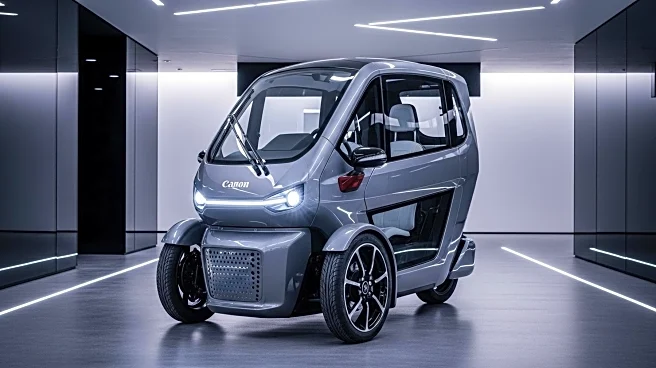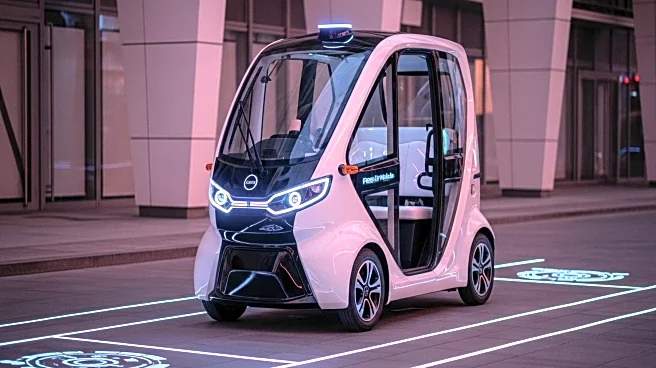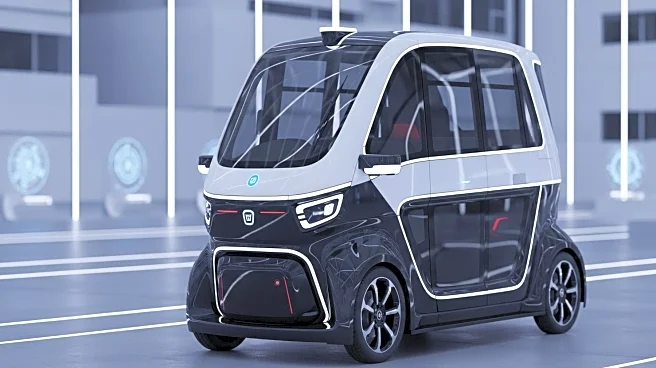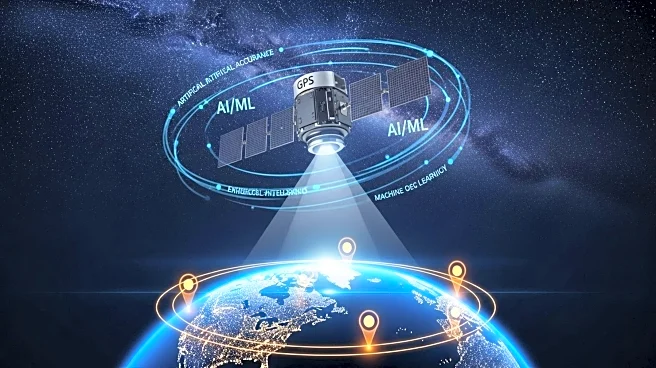What is the story about?
What's Happening?
Omega Seiki Mobility, an Indian electric vehicle manufacturer, has introduced Swayamgati, the world's first commercially available autonomous electric three-wheeler. The passenger variant is priced at Rs 4 lakh, with a cargo version set to follow at Rs 4.15 lakh. Bookings for the vehicle are now open. Designed for short-distance passenger transport in controlled environments such as airports, technology parks, industrial hubs, smart cities, and large campuses, Swayamgati features an AI-based autonomy stack with Lidar, GPS, multi-sensor navigation, and remote safety controls. It can detect obstacles within six meters and offers a driving range of up to 120 km per charge. The company plans to roll out 1,500 units within the next 24 months, following a successful pilot phase where the vehicle completed a 3-km route with seven stops without human intervention.
Why It's Important?
The launch of Swayamgati marks a significant advancement in autonomous vehicle technology, particularly in the electric vehicle sector. By offering a fully autonomous and electric solution, Omega Seiki Mobility is addressing the growing demand for sustainable and efficient transportation options in high-density environments. The vehicle's ability to navigate crowded, low-speed traffic and varied road surfaces makes it ideal for smart cities and transport hubs, potentially transforming urban mobility. Additionally, its zero-emission design contributes to environmental sustainability, while its affordability makes advanced autonomous technology accessible to businesses in Tier 2 and Tier 3 locations, potentially driving economic growth in these areas.
What's Next?
Omega Seiki Mobility aims to deploy 1,500 units of Swayamgati over the next two years, focusing on expanding its presence in controlled environments such as airports and industrial hubs. The company may also explore partnerships with local governments and businesses to integrate the vehicle into existing transportation networks. As the technology proves successful, there could be increased interest from other regions and industries, potentially leading to further innovations and adaptations of autonomous electric vehicles for broader applications.
Beyond the Headlines
The introduction of Swayamgati could have broader implications for the future of urban planning and infrastructure development. As autonomous vehicles become more prevalent, cities may need to adapt their infrastructure to accommodate these technologies, potentially leading to changes in traffic management and public transportation systems. Additionally, the success of Swayamgati could encourage other manufacturers to invest in autonomous technology, driving competition and innovation in the electric vehicle market.
AI Generated Content
Do you find this article useful?














